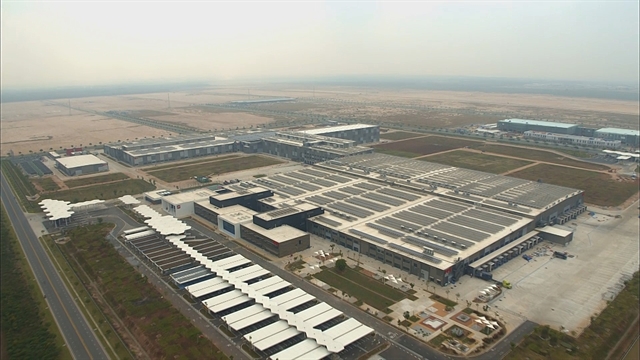 Economy
Economy


|
| Ministry of Industry and Trade (MoIT) says Việt Nam will prioritise the development of renewable energy. — Photo courtesy of the ministry |
HÀ NỘI — Although the most recent draft of the National Power Development Plan actually increased the volume of coal-fired projects in Việt Nam, the Ministry of Industry and Trade (MoIT) has said it won't consider developing any new coal-fired plants, to save the environment.
Earlier, experts raised concerns over a draft release of the National Power Development Plan for the 2021 - 30 period (PDP VIII) from the MoIT, as it included the use of coal power for another 10 years and continues the development of coal-fired plants until 2045.
The draft PDP VIII increases coal-fired power supply to about 22,000 MW by 2030 and another 8,000 MW by 2045. In response, local experts have asked the ministry to re-evaluate as they believe the plants to be unfeasible, expensive and harmful to the environment.
In response, the MoIT stated it wouldn't allow any new coal-fired projects and would instead replace them with more environmentally-friendly liquefied natural gas (LNG) sources.
According to the ministry, a document has been sent to ministries, branches and units to collect comments on the draft. These comments will form part of a review which will then be submitted to the appraisal council for consideration before the scheme is submitted to the Prime Minister.
MoIT’s Department of Electricity and Renewable Energy said the draft would be compatible with the reality in Việt Nam, balancing power sources from hydroelectricity, thermal power and renewable energy while ensuring compatibility between regions, to avoided wasting resources.
MoIT said many parts of the draft had been changed since Report No 1682/TTr-BCT was submitted to the Prime Minister in March 2021.
Accordingly, renewable energy power sources will continue to be prioritised for development at a reasonable rate, harmonising across regions in line with the power system development program until 2030.
Renewable energy, excluding hydroelectricity, will increase from about 17,000 MW at present to 31,600 MW in 2030, accounting for about 24.3 per cent of the total capacity of the whole system.
The draft also minimizes the development of new coal-fired power plants to only those approved by the Prime Minister in the revised Power Master Plan VII. In the draft, the total volume of coal power sources in the baseload option in 2030 will be 40,700 GW, about 15,000 MW lower than the revised Power Plan VII.
MoIT said there would be no coal-fired power plants considered for development in areas of Hải Phòng, Quảng Ninh, Long An, Bạc Liêu or Tân Phước. Instead, the areas will have LNG gas power sources, the ministry added.
It is calculated that coal-fired power plants will account for about 31 per cent of the total in 2030 in the baseload scenario and about 28 per cent in the high load scenario.
Việt Nam second-largest electricity consumer in the region
In Việt Nam, coal-fired power is still the main source of electricity. The capacity of coal-fired power plants has increased significantly, from about 3 GW in 2010 to 20.2 GW in 2019, accounting for about 36 per cent of total installed capacity. By the end of May 2021, electricity output from coal-fired power plants accounted for 51.7 per cent of the total electricity output of the whole system.
Last year, Việt Nam’s total power generation stood at 241.1TWh, of which 104.9TWh or 43.5 per cent was sourced from coal-fired power plants, according to GlobalData. The organisation added, “Within the past five years, Việt Nam has gone from being a net coal exporter to a net importer. Việt Nam’s coal imports have increased by more than 50 per cent year-on-year in the first half of 2020.”
According to the International Energy Agency, Việt Nam is the second-largest electricity consumer in Southeast Asia, which has one of the fastest-growing levels of energy demand in the world. Over the past 20 years, demand has grown at a steady 6 per cent per year and the IEA says the four largest consumers – Indonesia, Việt Nam, Thailand and Malaysia – account for more than 80 per cent of total regional demand.
In June, the Carbon Tracker group announced five Asian countries, including Việt Nam, are responsible for 80 per cent of new coal power plants planned around the world. The group, which also included China, India, Indonesia and Japan, plans to build more than 600 new units with a combined capacity of over 300GW. This is despite calls from UN Secretary-General Antonio Guterres for all new coal plants to be cancelled to tackle the climate crisis.
President Xi Jinping in his address at the United Nations General Assembly last week promised China would step up support for other developing countries in developing green and low-carbon energy, and would not build new coal-fired power projects abroad.
The PDP VIII of MoIT is still collecting comments to better serve the energy demand of the country in the most sustainable way, said the ministry. — VNS




